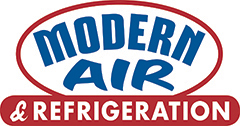 Air quality testing is not a topic you often hear about inside the home. For most of us, the only time we concern ourselves with the quality of the air in our home is when we burn something cooking.
Air quality testing is not a topic you often hear about inside the home. For most of us, the only time we concern ourselves with the quality of the air in our home is when we burn something cooking.
That nasty smell is not the only concern we should have about our air, however. Besides the workplace, home is where we spend most of our time. Low quality air in our home can lead to temporally, and in some cases, long term health problems.
So what can you do to improve the air quality in your home? Modern Air & Refrigeration has a handy guide on the steps you can take to protect you and your loved ones from the dangers of low quality air.
Common Indoor Air Pollutants
Air quality testing for homes typically looks for common household pollutants such as carbon monoxide, radon, asbestos, and more. Most of these pollutants are introduced into the home by the current or previous occupants. These pollutants appear depending on the age of your home in cases of building materials such as asbestos. Other pollutants such as mold and mildew can only be detected by eyesight most likely by the homeowner.
Homes with pets are also more likely to suffer from dander and droppings from pests that attach themselves to pets. Pesticides are another common source of pollutants. Most modern pesticides have natural, non-toxic alternatives that should be used inside the home instead.
Air Quality Testing Methods
Depending on the pollutant, air quality testing can be done by the homeowner using readily available testing kits. Volatile organic compounds such as formaldehyde can be detected by over the counter kits. Similarly, carbon monoxide alarms are invaluable throughout your home to protect against this dangerous pollutant.
The problem with detection methods for homeowners lies in the fact that you first have to suspect there is an issue to test for it. For most sufferers of poor indoor air quality, physical symptoms such as constant sneezing or runny noses are not easily associated with the air quality inside the home leading to months of discomfort before the issue is discovered and properly treated.
Air Quality Maintenance
So how can you as a homeowner accurately test and keep your indoor air quality up to the highest standards? The first step is in ensuring your air conditioning system is operating at its most optimal level. Your HVAC unit is the circulator of the air within your home. It’s the first line of defense against any pollutants that may plague your home. Barring that, a professional indoor air testing check is highly recommended. The Florida state government has a handy list of local providers you can contact to test your home.
Keep your indoor quality level after your air quality test. Call Modern Air and Refrigeration’s 24/7 line at (941) 404-7557 or send us a quick message for HVAC maintenance.
